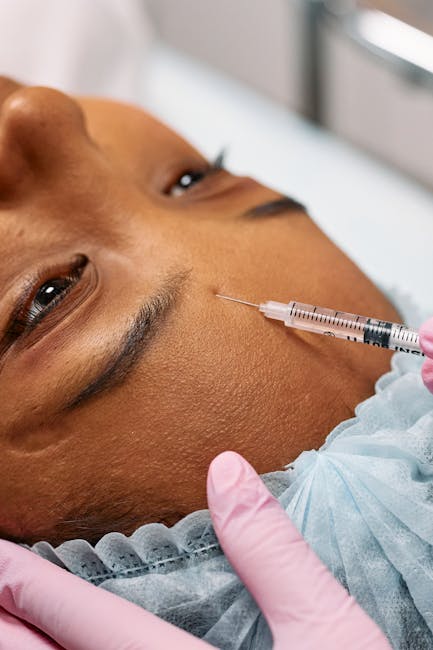Best Practices for Botox Treatment Aftercare
Botox has become one of the most popular cosmetic procedures worldwide, with millions of injections administered annually. While the procedure itself is relatively straightforward, proper aftercare is essential to ensure optimal results and minimize potential side effects. In this comprehensive guide, we’ll explore the best practices for Botox treatment aftercare, offering actionable tips and insights to help you maintain your youthful appearance safely and effectively.
Understanding Botox: A Brief Overview
Before diving into aftercare, it’s important to understand what Botox is and how it works. Botox, or Botulinum toxin type A, is a neurotoxin that temporarily relaxes facial muscles, reducing the appearance of fine lines and wrinkles. According to the American Society of Plastic Surgeons, Botox injections are the most frequently performed non-surgical cosmetic procedure in the United States, with over 7.4 million treatments in 2021 alone.
Immediate Post-Treatment Care
The First 24 Hours
Immediately following your Botox treatment, there are several critical steps you should take to ensure the best results:
- Avoid touching or massaging the treated area: This helps prevent the Botox from spreading to unintended muscles, which could impact your results.
- Stay upright for at least four hours: Lying down too soon can cause the Botox to migrate, leading to uneven effects.
- Refrain from strenuous activity: Exercising within 24 hours post-treatment can increase blood flow to the face, potentially reducing the effectiveness of the Botox.
Managing Minor Side Effects
Some patients may experience minor side effects such as redness, swelling, or bruising at the injection site. Here are some tips to manage these symptoms:
- Apply a cold compress: Gently apply a cold pack to the treated area to reduce swelling and discomfort.
- Avoid blood thinners: Stay away from aspirin, ibuprofen, and alcohol for at least 24 hours, as they can exacerbate bruising.
- Use arnica gel: This natural remedy can help minimize bruising and swelling.
Long-Term Aftercare Tips
Skincare Routine Adjustments
Incorporating a tailored skincare routine is essential to maintaining your Botox results. Consider the following adjustments:
- Hydrate your skin: Use a high-quality moisturizer to keep your skin supple and hydrated, enhancing the longevity of your Botox treatment.
- Sun protection is key: Protect your skin from UV rays by applying a broad-spectrum SPF daily, as sun damage can accelerate the aging process.
- Gentle cleansing: Opt for a mild cleanser to avoid irritating the treated areas.
Diet and Lifestyle Considerations
Your diet and lifestyle choices can significantly impact the effectiveness and duration of your Botox results. Consider the following:
- Stay hydrated: Drinking plenty of water supports the health and elasticity of your skin.
- Maintain a balanced diet: Include plenty of fruits, vegetables, and omega-3 rich foods to support skin health.
- Avoid smoking: Smoking can accelerate skin aging and impact the longevity of your Botox results.
When to Contact Your Provider
While Botox is generally safe, it’s important to know when to consult your provider. Seek professional advice if you experience any of the following:
- Prolonged swelling or bruising: If swelling or bruising persists beyond a few days, consult your provider.
- Signs of an allergic reaction: These include difficulty breathing, hives, or swelling of the face, lips, or throat.
- Asymmetry or unexpected results: If your results appear uneven or unexpected, your provider may recommend a follow-up appointment.
Maximizing Botox Longevity
Regular Maintenance Treatments
To maintain your desired appearance, schedule regular maintenance treatments with your provider. Typically, Botox effects last between three to six months, but this can vary based on individual factors. Regular consultations with your provider will help determine the ideal treatment schedule for you.
Complementary Procedures
Consider combining Botox with other non-surgical treatments to enhance your results. For example:
- Dermal fillers: These can add volume and smooth deeper wrinkles, complementing your Botox treatment.
- Laser treatments: Laser therapy can address skin texture and tone, providing a more comprehensive rejuvenation.
Conclusion: Embrace Your Rejuvenated Look
Proper Botox treatment aftercare is crucial in ensuring you achieve the best possible results. By following these best practices and maintaining open communication with your healthcare provider, you can enjoy the benefits of a youthful, refreshed appearance. Remember, each individual’s needs and responses to Botox may differ, so always tailor these guidelines to suit your personal circumstances.
Whether you’re new to Botox or a seasoned veteran, adhering to these aftercare tips will help you maximize the longevity and effectiveness of your treatment, leaving you with a confident, rejuvenated glow.

